no images were found |
|
This small-in-the-frame Common Nighthawk image was created at Indian Lake Estates with the with the Canon EF 600mm f/4L IS II USM lens, the Canon 2x EF Extender III (Teleconverter), and the Canon EOS 5D Mark III. ISO 800. Evaluative metering +2/3 stop: 1/160 sec. at f/9 in Av Mode. Central sensor Expand (by necessity)/AI Servo/Rear Focus on the bird’s eye and re-compose. Click here if you missed the Rear Focus Tutorial. Click on the image to see a larger version. This, the small in the frame version, was my favorite by a mile. |
Can Less Be More?
On July 11, while I was in the Galapagos, “Can Less Be More?” was published. I asked, “Which image do you like best? I made the small-in-the-frame image before I approached more closely to create the image that opened that blog post. Please leave a comment and let us know which of the two images you like best. And why?
About 15 folks responded. Six liked the large in the frame image. Two liked the small in the frame image. The rest liked them both. Here is my take:
While the larger in the frame image would be best for a field guide, there is no doubt in my mind that the small in the frame image is much more pleasing to the eye, and thus, a much more successful photograph. And besides, I like it best by far.
Jack Breakfast summed it up quite well when he wrote, “To me, the second image is vastly superior, at least from an artistic standpoint. The second image elicits, is evocative, and has some spark to it. The first image is a well-executed picture of a bird. I’ll go with door #2 any day of the week. Well done, Commander Morris.”
Brooke was also in my camp on this one when she wrote: “I definitely like the second photo (small in-the-frame) best. The bird’s head is at a good angle, and the two epiphytes really add to the scene without distracting from the bird. My personal preference is to have a part of the bird’s environment in the photo without it being distracting.”
When I first began photographing birds my great desire was to create “full frame” images. I quickly learned that stuffing the bird in the frame with the bill tip against one frame edge and the tail tip against the other frame edge is not the way to go. Birds need room in the frame. They need to be able to see into their worlds, to have a place to go. That is why we place the birds back in the frame when working in horizontal format. In The Art of Bird Photography II I suggest that the longest dimension of the bird should never take up more than 3/4 of the frame.
|
This white morph Red-footed Booby image was created with the Canon EF 200-400mm f/4L IS USM Lens with Internal 1.4x Extender (hand held at 381mm) and the Canon EOS-1D X. ISO 800. Evaluative metering +2/3 stop: 1/160 sec. at f/4. Two sensors above and one to the right of the central sensor/AI Servo-Surround/Rear Focus AF on the bird’s neck active at the moment of exposure. Click here if you missed the Rear Focus Tutorial. This was one of the very first images that I made on what turned out to be a magical morning. White morph red-footeds make up less than 5% of the population. |
Love the White Morph Images
In the July 19th blog post, “Beginning of a Love Affair with the Canon EF 200-400mm f/4L IS lens: Day 2 Darwin Bay, Tower Island am-Part I,” I asked folks to let us know their favorite images. I believe that all of the images garnered at least a single vote. My two favorites were the two white-morph Red-footed Booby images, the one with the cactus background (above) because of the beautiful image design and excellent post processing (he said modestly). I ran Detail Extractor on the cactus and punched up the YELLOWs and GREENs to highlight the cactus. On the flight image (below) I love the sharpness, the wing position, the splayed tail, and those piercing eyes.
|
This white morph Red-footed Booby image was created with the Canon EF 200-400mm f/4L IS USM Lens with Internal 1.4x Extender (hand held at 325mm) and the Canon EOS-1D X. ISO 800. Evaluative metering +1 1/3 stops off the grey sky: 1/1000 sec. at f/4. Central sensor/AI Servo Surround/Rear Focus AF on the bird’s face active at the moment of exposure. Click here if you missed the Rear Focus Tutorial. Click on the image to see a larger version. |
Nickerson Beach IPT
Denise Ippolito and I are heading out to dinner in Rockville Centre in a few. We meet the group for the sold-out Nickerson Beach Baby Beach-nesting Birds IPT at 7pm sharp. We are looking forward to putting on a great workshop.
Photographic Society of Chattanooga Seminar
Scroll down here for details on the Saturday seminar that Denise Ippolito and yours truly are doing in Chattanooga on October 12, 2013 and the follow-up Old Car City In-the-Field Workshop. Blog folks who sign up for both are invited to join us at a secret Urbex location in Atlanta on Friday morning October 11. Feel free to e-mail me for details after you are registered for both.
|
Snow Goose composite, Bosque del Apache NWR, San Antonio, NM. Click on the image for a larger version. |
Bosque del Apache 2013 IPT: “The Complete Bosque Experience.” NOV 26-DEC 2, 2013. 7-FULL DAYS: $3399. Co-leader: Denise Ippolito. Introductory Slide program: 6:30 pm on 11/25. Limit: 12.
Tens of thousand of Snow Geese, 10,000 Sandhill Cranes, ducks including point-blank American Wigeon and Wood Duck, amazing sunrises, sunsets, and blast-offs. Live, eat, and breathe photography with one of (if not the) world’s premier photographic educators at one of his very favorite locations on the planet. Top-notch Photoshop instruction. This will make 19 consecutive Novembers at Bosque for me. Nobody knows the place better than I do. Join us to learn to think like a pro, to recognize situations and to anticipate them based on the weather, especially the sky conditions, the light, and the wind direction. Every time we make a move we will let you know why. When you head home applying what you learned will prove to be invaluable. Includes all lunches and the Thanksgiving Buffet at the Crowne Plaza in Albuquerque. I hope that you can join me for what will be an unparalleled learning experience.
A $500 non-refundable deposit is required to hold your slot for this IPT. Your balance is due 4 months before the date of the IPT and is also non-refundable. If the trip fills, we will be glad to apply a credit applicable to a future IPT for the full amount less a $100 processing fee. If we do not receive your check for the balance on or before the due date we will try to fill your spot from the waiting list. If your spot is filled, you will lose your deposit. If not, you can secure your spot by paying your balance.
Please print, complete, and sign the form that is linked to here and shoot it to us along with your deposit check (made out to “Arthur Morris.”) You can also leave your deposit with a credit card by calling the office at 863-692-0906. If you register by phone, please print, complete and sign the form as noted above and either mail it to us or e-mail the scan. If you have any questions, please feel free to contact me via e-mail.
|
Images copyright 2012: Denise Ippoltio & Arthur Morris. Card design by Denise Ippolito. Click on the image to enjoy a spectacular larger version. |
Holland 2014 7 1/2-Day/8-Night: A Creative Adventure/BIRDS AS ART/Tulips & A Touch of Holland IPT. April 17-April 24, 2014 :$4995 Limit: 12 photographers/Openings 9
This trip needs 8 registrants to run so please do not purchase your plane tickets until you hear from us; right now we need 5 more folks.
Join Denise Ippolito, Flower Queen and the author of “Bloomin’ Ideas,” BPN Photo Gear Moderator, former Nikon shooter, and technical expert Peter Kes, and Arthur Morris, Canon Explorer of Light and one of the planet’s premier photographic educators for a great trip to Holland in mid-April 2014. Day 1 of the IPT will be April 17, 2014. We will have a short afternoon get-together and then our first photographic session at the justly-famed Keukenhof. Peter who is originally from Holland, will be our local guide/interpreter/driver. Most days we will return to the hotel for lunch, image sharing and a break. On Day 8, April 24, we will enjoy both morning and afternoon photography sessions.
The primary subjects will be tulips and orchids at Keukenhof and the spectacularly amazing tulip, hyacinth, and daffodil bulb fields around Lisse. In addition we will spend one full day in Amsterdam. There will be optional visits the Van Gogh Museum in the morning and the Anne Frank House in the afternoon; there will be plenty of time for street photography as well. And some great food. On another day we will have a wonderful early dinner at Kinderdijk and then head out with our gear to photograph the windmills and possibly some birds for those who bring their longs lenses. We will spend an afternoon in the lovely Dutch town of Edam where we will do some street photography and enjoy a superb dinner. All lodging, ground transportation, entry fees, and meals (from dinner on Day 1 through dinner on Day 8) are included.
For those who will be bringing a big lens we will likely have an optional bird photography afternoon or two or possibly three. The big attraction should be gorgeous Purple Herons in flight at a breeding marsh. We would be photographing them from the roadside. And we might be able to find a few Great-crested Grebes at a location near Keukenhof.
Click here for complete details and some previously unpublished images. And/or click here and see item one for lots more tulip photos and complete trip details.
|
Images courtesy of and copyright 2012: Bill Mueller. Card design by Denise Ippolito. |
Old Car City Creative Photography In-the-Field HDR Workshop: Sunday, October 13, 2013/ 9am till 1pm.
White, Georgia: $250 plus a $15 entrance fee donation (cash only on the day of the event) that will go to charity. Limit: 16 photographers.
On October 13, 2013, Arthur Morris/BIRDS AS ART and Denise Ippolito/A Creative Adventure will be conducting an In-the-Field HDR Workshop at Old Car City in White, Georgia. Old Car City is about an hour north of Atlanta, GA and an hour south of Chattanooga, TN where they will, as noted above, be doing a full day seminar for the Photographic Society of Chattanooga on Saturday, October 12th. Click here for complete details.
Typos
On all blog posts, feel free to e-mail or leave a comment regarding any typos, wrong words, misspellings, omissions, or grammatical errors. Just be right. 🙂
Support the BAA Blog. Support the BAA Bulletins: Shop B&H here!
We want and need to keep providing you with the latest free information, photography and Photoshop lessons, and all manner of related information. Show your appreciation by making your purchases immediately after clicking on any of our B&H or Amazon Affiliate links in this blog post. Remember, B&H ain’t just photography!




Support the Blog


Amazon
Everyone buys something from Amazon, be it a big lens or deodorant. Support the blog by starting your search by typing in the little white box below. No purchase is too small to be appreciated; they all add up. Why make it a habit? Because I make it a habit of bringing you new images and information on an almost daily basis.
And from the BAA On-line Store:
LensCoats. I have a LensCoat on each of my big lenses to protect them from nicks and thus increase their re-sales value. All my big lens LensCoat stuff is in Hardwood Snow pattern.
LegCoat Tripod Leg Covers. I have four tripods active and each has a Hardwood Snow LegCoat on it to help prevent further damage to my tender shoulders 🙂 And you will love them in mega-cold weather….
Gitzo GT3532 LS CF Tripod. This one replaces the GT3530LS Tripod and will last you a lifetime. Learn more about this great tripod here.
Mongoose M3.6 Tripod Head. Right now this is the best tripod head around for use with lenses that weigh less than 9 pounds. For heavier lenses, check out the Wimberley V2 head.
Double Bubble Level. You will find one in my camera’s hot shoe whenever I am not using flash.
The Lens Align Mark II. I use the Lens Align Mark II pretty much religiously to micro-adjust all of my gear an average of once a month and always before a major trip. Enjoy our free comprehensive tutorial here.
BreezeBrowser. I do not see how any digital photographer can exist without this program.
Delkin Flash Cards. I use and depend on Delkin compact Flash Cards and card readers most every day. Learn more about their great 700X and 1000X cards here or about my favorite Delkin card here.

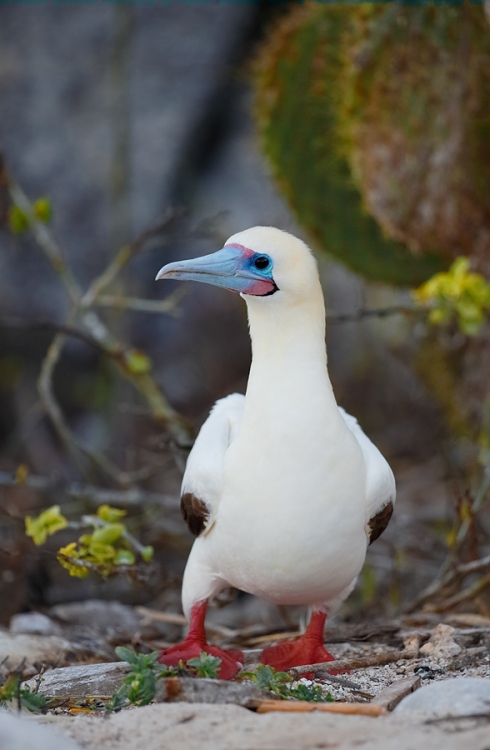
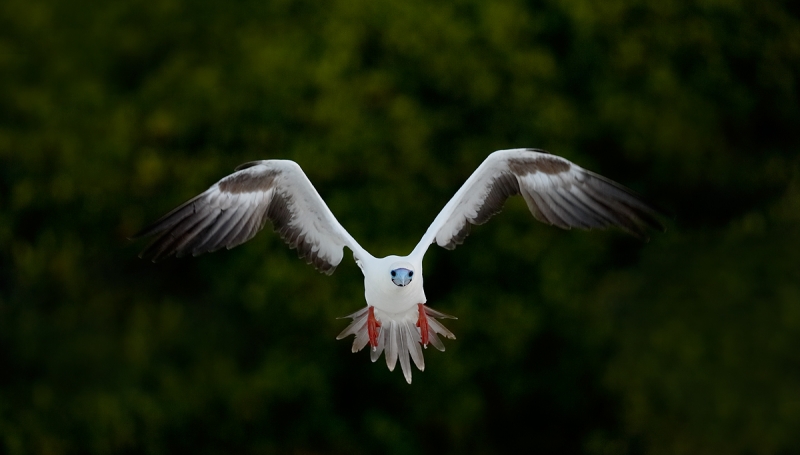
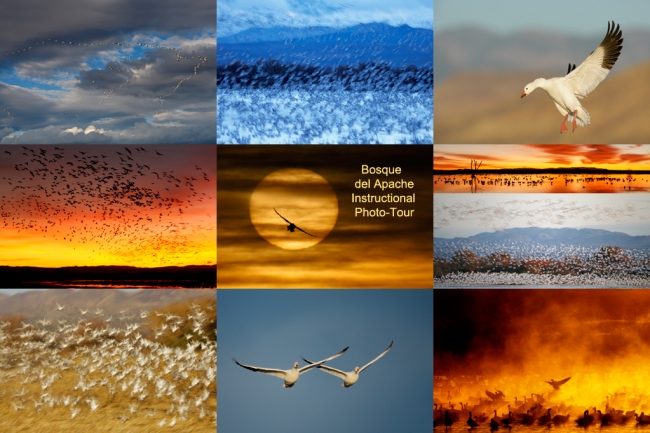
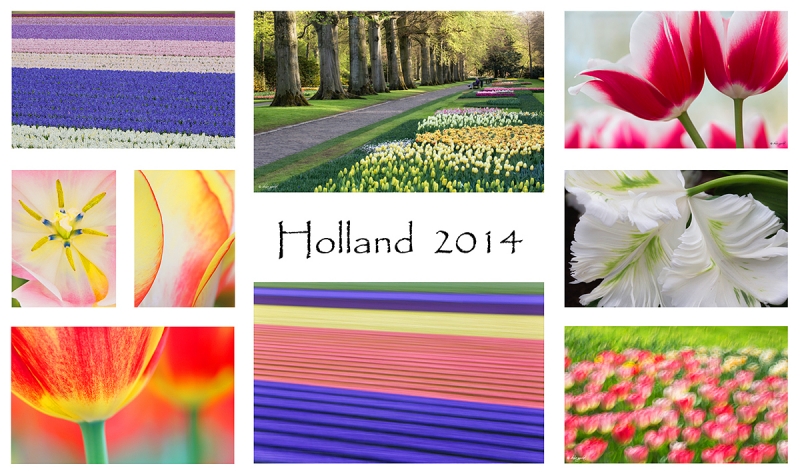
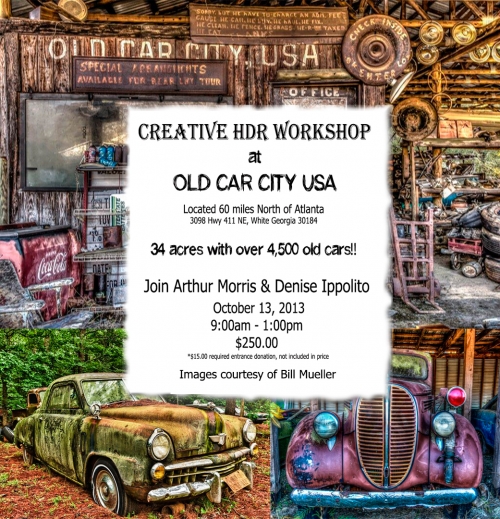













Hey Artie! One of the things I have learned from our last IPT together is that I tended to frame too tight, and today I see very well the value of taking a wider approach. I agree that the wider shot is much better on the Nighthawk. Very well done!!
We Brits have always preferred habitat detail in the Background to give a complete picture – although there are, of course, perfectly valid reasons for the simple ‘bird on a stick’ clean BG images.
It all depends on the reason for taking the photograph and its possible usage. The Red-footed Booby and cactus is a superb image. The soft light (and your editing of course) has rendered the subtle tones in the white plumage beautifully, but the shape, facial colours and general ‘attitude’ makes sure that the bird stands out well from the BG. I would have toned down, not removed, the pale stick below the birds bill using a 50% clone stamp and slightly toned down the yellow flower on the right. Well, it is easy to make suggestions in retrospect, and you did ask!!! ‘Looking forward to more super Galapagos images.
When uttered by most Brits, Europeans, and Japanese, the phrase “simple bird on a stick clean background images” is often used disparagingly. And in most of those cases the folks uttering those words are not capable of creating a single decent image that would fit in either category. Please don’t take my comments too personally as I have seen a few good images of yours over the years.
As far as your suggestion for additional image clean-up I am sure that you realize that nearly all Brits, Europeans, and Japanese would castigate you for just having those thoughts much less stating them in a public forum.
I am fine with the yellow leaves (not flowers) on the right.